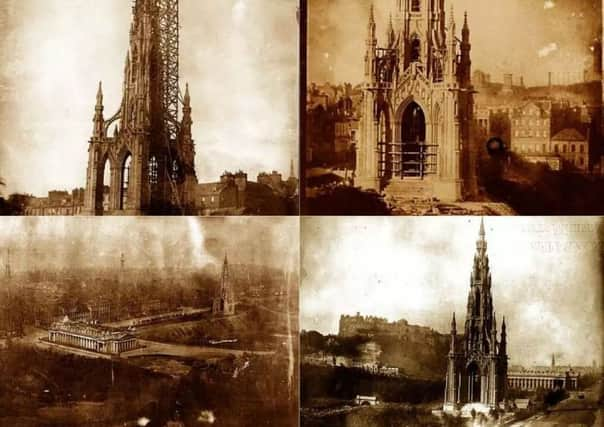On this day in 1840: Foundation stone of Scott Monument laid in Princes Street Gardens


It so happens that the stone was laid on the birthday of the architect responsible for the iconic monument, whose tale is equally timeless.
The rocket-shaped structure was built in honour of the Scottish literary icon and is still the largest monument to a writer anywhere in the globe.
Advertisement
Hide AdAlthough famed for works like Ivanhoe and The Heart of Midlothian, Sir Walter Scott was also among a group of those who ‘re-discovered’ the Scottish Regalia (Scottish Crown Jewels), which were locked in an obscure chest in Edinburgh Castle following the 1707 Acts of Union.
The iconic monument was designed and built by the self-taught architect, George Meikle Kemp, a shepherd’s son from the Pentlands. The architect’s incredible story is one that could have been penned by Scott himself.
Kemp discovered a love of gothic architecture during a childhood visit to Rosslyn Chapel. This passion would take him across Scotland, England and France on foot, as he sought out, drew and memorised the details of gothic structures.
In this fashion he mastered his craft without any traditional training.
After Sir Walter Scott’s death in 1832, it was decided that a monument befitting the scope of his reputation should be constructed. In the same way that the fate of the New Town was decided, a competition was held to find the best design.
Fearful that his lack of reputation would be held against him, Kemp entered under the pseudonym, John Morvo.
Advertisement
Hide Ad“John Morvo had been a mason who had worked on Melrose Abbey,” explains local historian Eric Melvin.
“Not being a recognised architect, if he’d submitted it under his own name and people had realised he was just a carpenter, they would have just binned it straight away, I suspect.”
Advertisement
Hide AdDespite coming third in the initial competition, Kemp refined his design and eventually won the competition - and secured his place in Scotland’s history.
“You can understand that the Edinburgh establishment are shocked - that somebody who they would look down upon a little bit has come through and has won the competition,” says Melvin.
The historian believes there were several reason’s for Kemp’s success.
“One of the reasons why his design worked is that is was modelled on Melrose Abbey, the ruins of which were quite close to Abbottsford,” he says, referring to the place where Scott lived and died.
According to Melvin, another reason was “that the [monument] was to be decorated by characters from Scott’s poetry and novels”. Some 68 figurines remain today, representing the author’s characters and contemporaries, such as James Hogg and Robert Burns.
Although the monument was completed four years after the foundation stone was laid, Kemp did not live to witness his finished contribution to the gothic architectural style he so admired.
Advertisement
Hide AdHe tragically drowned in the Union Canal early in 1844. Kemp’s son would lay the final stone in honour of his father, whose name remains etched in Scottish history.
Images of the monument’s construction, including a portrait of Kemp himself still remain - thanks to a number of incredible calotype images created by David Octavius Hill and Robert Adamson.
